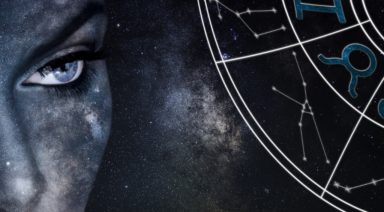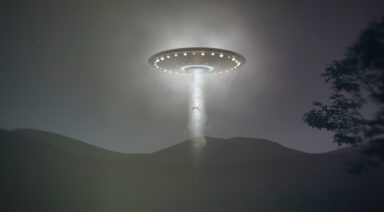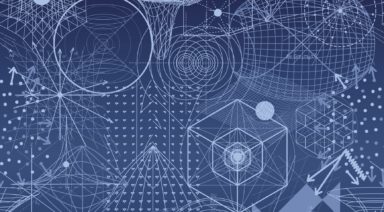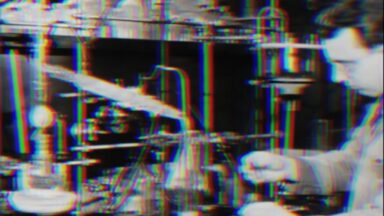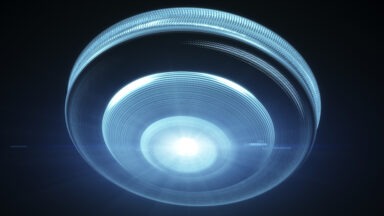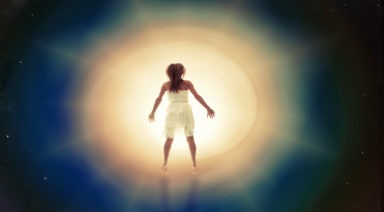An Evolution of Ancient Astronaut Theory’s Proof and Proponents
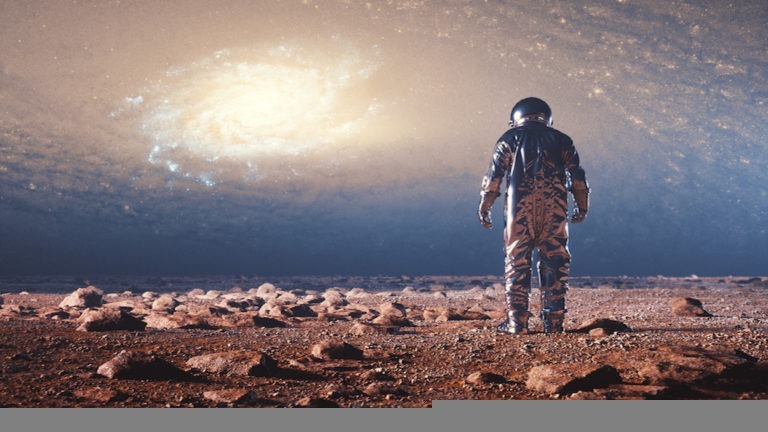
Religion molds many people’s worldview and beliefs about our origin as a species. From a young age, and even as we grow older, we tend to hold on to aspects of those stories – many of which involve magic or divine phenomena. But as technology has progressed over those years, things that once seemed magical, now make perfect sense and fall within the widening realm of possibility. And as our modern worldview has become shaped by this techno-centric, materialist scope, the ancient astronaut theory has found an increasingly larger audience.
If you’re not familiar with Gaia’s content, maybe you’ve seen the program Ancient Aliens on History Channel, or possibly read Erich von Däniken’s classic book Chariots of the Gods? These series are founded on the ancient astronaut hypothesis; the assertion that if you reinterpret biblical accounts of supernatural gods with magic powers instead, as members of an advanced extraterrestrial race with advanced technology, their depictions make a lot more sense.
Arthur C. Clarke famously made this contention later when he said, “any sufficiently advanced technology is indistinguishable from magic.” And though it’s unclear whether Clarke ascribed to the belief, it’s likely he would have at least entertained it.
In Search of Ancient Astronauts…
It’s uncertain who first conceived of the ancient astronaut theory, but there are certainly a few ‘founding fathers,’ if you will. And in the mid-20th century, a cadre of these thinkers began to publish parallel theories based on the idea that the powers possessed by ‘gods’ of religious lore were starting to sound awfully similar to modern technological advancements.
Influenced by cryptic ancient texts, an increasing fascination with science fiction, and advancements in the space program, researchers such as Zechariah Sitchin, von Däniken, and even Carl Sagan began to entertain the theory. These thinkers pointed to the anachronistic nature of certain artifacts, “cargo cults” that viewed modern technology as if it were magic, and the incredibly advanced engineering seen in megalithic sites around the world, ostensibly constructed by primitive means.
But while they may have agreed that the theory was plausible, their beliefs varied dramatically, and Carl Sagan would later disavow those who speculated wildly without providing solid, verifiable evidence. After all, it was Sagan who famously said, “extraordinary claims require extraordinary evidence.”
Sagan was certainly captivated by the prospect of extraterrestrial life, believing proof of its existence would drastically change the course of humanity, in terms of politics, prejudice, and war providing us with a renewed sense of hope and direction. But when the idea began to take off in the 1960s, Sagan and colleague I.S. Shklovski backtracked on the ancient astronaut hypothesis they once encouraged scientists and historians to consider.
Though by that point they had already laid the foundation for the theory, especially with their interpretations of ancient Sumerian texts, such as the Oannes, which described in detail a fishlike being that taught early civilizations agriculture, mathematics, and arts. This likely paved the way for Sitchin’s translations of the Sumerian epics, beginning with his seminal work, The 12 Planet.
Sitchin’s interpretations of Sumerian cuneiform tablets posited the idea that an undiscovered planet in our solar system, orbiting in a 3,600-year cycle, was home to an extraterrestrial race called the Anunnaki, who were responsible for the advancement of human civilization. He famously called their planet, Nibiru.
Sitchin’s interpretations and theory have been debated, ‘debunked,’ and dissected for decades, but despite the controversy, his work has maintained its place as one of the most popular ancient astronaut theories, selling millions of copies worldwide, and even continuing to inspire mainstream culture today.
Ancient Astronaut Evidence and Artifacts
Only a few years before Sitchin’s theories found mainstream approval, the precursor to today’s Ancient Aliens aired on television as the wildly popular, Rod Serling and Leonard Nimoy-narrated series In Search Of…
Though not entirely focused on ancient astronauts, the show featured many unexplained phenomena related to it, including the cargo cults of WWII-era notoriety. It was in areas of the South Pacific, including Papua New Guinea, where primitive tribes witnessed modern ariplanes, piloted by beings who neither hunted, nor fished, yet never lacked food — and they shared!
Once the war ended they abandoned their airstrips, airplanes, and technology, leaving it behind to a primitive group of humans who had no idea how to use it or what to make of it. Instead, they created effigies of the airplanes, hoping to invoke those god-like men who piloted them and hopefully bring back the gifts which they believed were sent by their deceased ancestors.
This seemed to be one of the strongest points of evidence for the ancient astronaut theory and appeared to apply to many ancient cultures, including those that penned the Old Testament, Bible, Qu’ran, Mahabharata and other religious scripture, often describing the same phenomena with consistent anecdotal overlap.
But if one were to point to the most prominent influencer in the world of ancient astronaut theory, it would have to be von Däniken whose eminent title Chariots of the Gods? sold more than 70 million copies globally, since its publishing in 1968. He even had an entire ancient astronaut themed amusement park in Switzerland that was operational for a few years.
It’s possible that part of von Däniken’s appeal was the seemingly endless ancient astronaut proof that went beyond what others presented. Out of place artifacts like the Quimbaya airplanes, the Piri Reis Map, and the Nazca lines in Peru all proved confounding to mainstream archeology, and many remain so today. He delved deeply into esoteric biblical apocrypha like the Book of Enoch, as well as the strange stories of flying craft called Vimana and accounts of nuclear war in the Hindu Vedas.
Von Däniken provided mounting evidence that made increasing sense in a world where religious dogma and hippie-era spirituality started to clash. It was a sensical compromise in a world of antiquated religiosity and advancing technology.
And that legacy continues to captivate the minds of the curious today.
For more on his famous ancient astronaut theory, check out Gaia’s legacy series with Erich von Däniken, Beyond the Legend :
Pleiadians: Who They Are and What Their Mission on Earth Is

The Pleiadians are beings of light from the star cluster of the Pleiades, a group of stars with great importance in mythology and astronomy. These beings have a special connection with Earth and help humanity in its spiritual evolution. In this article, we explore who the Pleiadians are, their main characteristics, and the historical and cultural meaning of the Pleiades.
Table of Contents
- Who Are the Pleiadians?
- Main Characteristics of the Pleiadians
- How to Know if You Are a Pleiadian
- Mission of the Pleiadians on Earth
- How to Develop Your Connection with the Pleiadians
- Pleiadian Symbols
- The Pleiades: History and Meaning
- The Pleiades in Different Cultures and Mythologies
Who Are the Pleiadians?
The Pleiadians are multidimensional spiritual beings from the star system of the Pleiades, located in the constellation of Taurus. These beings, highly evolved both spiritually and technologically, are committed to the well-being and evolution of humanity. Their main mission is to guide humans toward a greater awakening of consciousness and universal harmony.
With a humanoid appearance and Nordic features, the Pleiadians possess a high energetic vibration and an innate connection with cosmic energy. This connection allows them to access higher knowledge and dimensions, transmitting wisdom and spiritual tools to humanity. They are recognized for their ability to heal and balance energies, acting as spiritual guides and protectors of Earth.
These beings interact with humanity through telepathy, dreams, meditation, and other forms of subtle communication. They often seek to connect with individuals who are open to receiving their guidance and who are in tune with their spiritual mission. The Pleiadians see Earth as a crucial planet in the development of the universe, and their goal is to assist in the transition toward an era of greater peace, love, and understanding, helping humanity reach its true potential.
Main Characteristics of the Pleiadians
The Pleiadians possess various characteristics that distinguish them and are mentioned in multiple sources and contact reports.
- Nordic appearance: They have a look similar to that of Nordic or Scandinavian people, with fair skin, blonde hair, and blue eyes.
- Lifespan: They live approximately 700 years, allowing them to accumulate vast knowledge and experience.
- Emotional development: They are highly emotionally developed, showing deep compassion and love for other beings.
- Spiritual development: Their spiritual evolution is advanced, and they practice a way of life based on harmony and balance.
- Telepathy: They use telepathy as their primary form of communication, facilitating the transmission of thoughts and feelings without the need for words.
- Advanced technology: They possess technology far superior to that of humans, including the ability to travel interstellarly.
- Helping mission: Their main objective is to help humanity in its spiritual evolution and in the protection of planet Earth.
How to Know if You Are a Pleiadian
It is possible that Pleiadians incarnate on Earth in human form to fulfill their spiritual mission. Therefore, you yourself could be a Pleiadian. If you experience certain signs and specific personal experiences, you may have a Pleiadian origin.
A common sign is a strong attraction to the Pleiades and a deep interest in spirituality and personal growth. If you feel an intuitive connection with these beings and a sense of having lived past lives in the Pleiades, you might be one of them.
Another indication is a strong empathy and sensitivity toward others. If you have a compassionate nature and a deep desire to help others reach their highest potential, you could be a Pleiadian. These characteristics often lead people to work in fields such as healing, teaching, or any area that involves supporting the development and well-being of others.
In addition, Pleiadians tend to experience a deep connection with nature and an innate desire to protect the environment. If you feel a strong responsibility toward Earth and seek to live in a more harmonious and sustainable way, this could be a sign. This connection can also manifest through intuitive or telepathic abilities. To gain more clarity about this connection, you may consider consulting an Akashic Records reading.
Mission of the Pleiadians on Earth
The mission of the Pleiadians on Earth is to support humanity in its process of spiritual transformation. These multidimensional beings aim to guide humans toward a greater awakening of consciousness, helping them reconnect with their true essence and overcome the limitations imposed by the ego and duality. The Pleiadians, through channelers and direct contact, provide teachings and tools to facilitate this process of evolution.
Additionally, the Pleiadians are interested in the well-being of the planet and all its inhabitants. Their goal is to promote greater balance and harmony on Earth, encouraging people to live in a more conscious and sustainable way. The messages they transmit often emphasize the importance of connecting with nature, unconditional love, and compassion for all living beings.
By raising the collective vibration of humanity, the Pleiadians believe that a more peaceful and prosperous reality can be created. In the series Galactic Messages, available on Gaia, Gosia Duszak reveals her direct communications with Swaruu of Erra, a Taygetan from the star system of the Pleiades. This series explores the Pleiadians’ mission on Earth and how their teachings can help humanity evolve and overcome the limitations imposed by the three-dimensional matrix.
How to Develop Your Connection with the Pleiadians
Developing your connection with the Pleiadians begins with a clear intention to open yourself to their guidance and wisdom. Meditation is fundamental for this purpose, as it allows you to calm your mind and raise your personal vibration. Meditating by visualizing the Pleiades or using Pleiadian symbols can facilitate the connection and help you receive intuitive messages.
Another method to strengthen this connection is keeping a journal of dreams and meditations. There you can note any experience or communication you feel is related to the Pleiadians. These records can offer you valuable insights and patterns that confirm the presence of these beings in your life. Stay receptive and trust your intuition, as these are key to correctly interpreting the messages.
Participating in communities and spiritual groups that share an interest in the Pleiadians can also provide you with additional support and guidance. Interacting with others who are on the same path can enrich your experience and offer you new perspectives and techniques to deepen your connection with these multidimensional beings.
Pleiadian Symbols
Pleiadian symbols are spiritual tools that facilitate connection with the energy and wisdom of the Pleiadians. These symbols are used in meditations and rituals to invoke the guidance and protection of the Pleiadians, assist in spiritual healing, and elevate consciousness.
- Seven-pointed star: Represents the seven sisters of the star cluster of the Pleiades. It is used to invoke the guidance and protection of the Pleiadians during meditation.
- Spiral: Symbolizes the continuous growth and evolution of the soul. Meditating with this symbol can elevate consciousness and facilitate emotional and spiritual healing.
- Mandala of light: Contains sacred patterns and healing energies. It is used to activate and harmonize the chakras, allowing for a more balanced and healthy energy flow in the body.
- Pyramid of light: Represents ascension and the connection with cosmic energies. Used to amplify energy during meditations and elevate personal vibration.
- Triskelion: An ancient symbol that represents balance and harmony between body, mind, and spirit. It helps maintain a stable connection with Pleiadian energies and facilitates the integration of their teachings.
The Pleiades: History and Meaning
The Pleiades, the place of origin of the Pleiadians, are a star cluster located in the constellation of Taurus. This group of stars, also known as the “Seven Sisters,” has been identified and studied since ancient times, being one of the most recognizable and significant celestial objects. At a distance of approximately 444 light-years from Earth, the Pleiades are visible to the naked eye and have inspired numerous stories and mythologies around the world.
Historically, the Pleiades have played an important role in navigation and agriculture. In ancient Greece, their appearance in the night sky marked the beginning of the navigation and planting season. Similarly, in many indigenous cultures, the position and visibility of the Pleiades were used to guide seasonal and ceremonial activities, demonstrating their relevance in the daily life of various civilizations.
The name “Pleiades” comes from the Greek myth of the seven daughters of the Titan Atlas and the nymph Pleione. The seven sisters, known as Maia, Electra, Taygete, Celaeno, Alcyone, Sterope, and Merope, have been symbolized in various cultures as a group of women or spiritual entities with deep astronomical and mythological meaning. Their influence in the legends and folklore of different peoples highlights the universality of their presence in the sky.
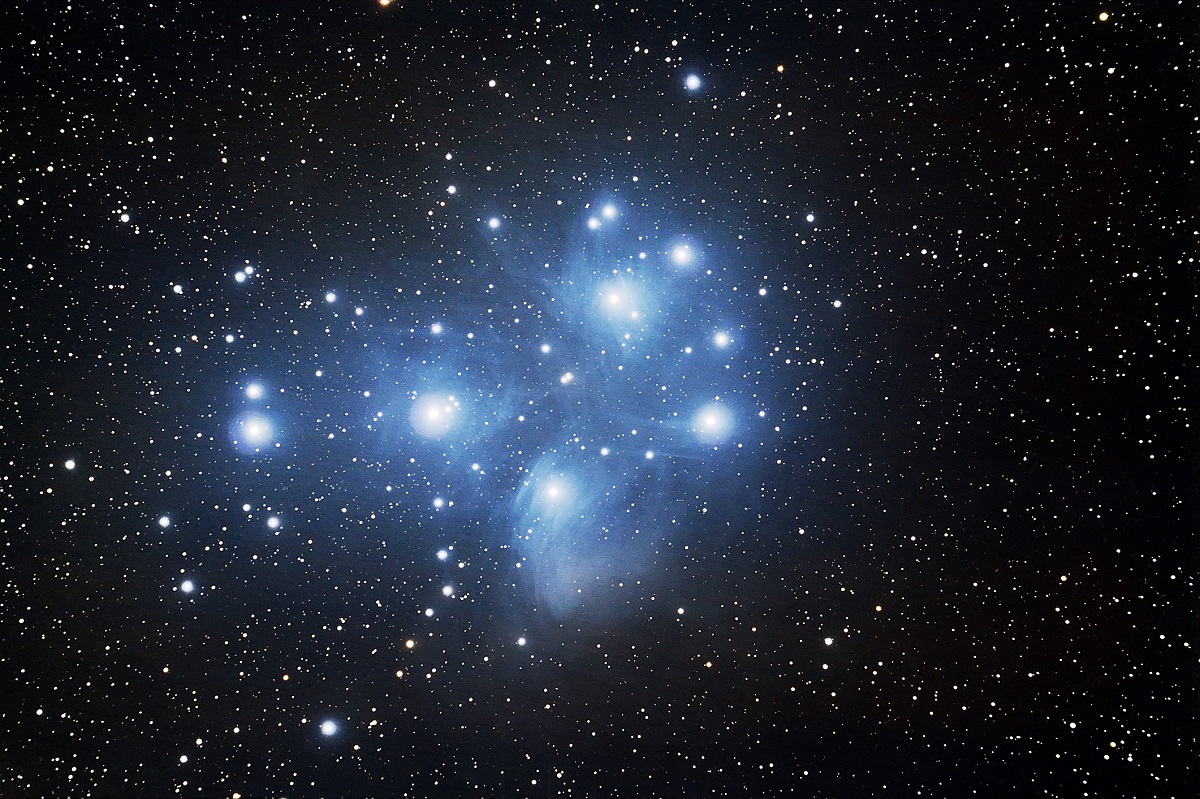
The Pleiades in Different Cultures and Mythologies
The Pleiades have been revered in various cultures and mythologies throughout history. In Greek cosmology, they represented the daughters of the Titan Atlas. In Japanese mythology, they are known as “Subaru” and symbolize unity and cooperation. Native Americans, such as the Cherokees and Lakotas, considered the Pleiades to be ancestors and sources of spiritual wisdom. These interpretations reflect the diversity and richness of the symbolism associated with this star cluster.
The Pleiades in Ancient Greek Cosmology
In Greek cosmology, the Pleiades were the seven daughters of the Titan Atlas and the nymph Pleione. Each of these sisters had her own myth and legacy. For example, Maia was the mother of Hermes, the messenger of the gods, while Electra was the mother of Dardanus, the founder of Troy. These connections with prominent figures in Greek mythology highlight the importance of the Pleiades in the Hellenic pantheon.
The Greek myth also tells that the Pleiades were transformed into stars by Zeus to save them from the hunter Orion, who pursued them relentlessly. This tale has been immortalized in the sky, where Orion continues to chase the Pleiades, symbolizing an eternal cosmic dance. The constellation of Taurus, where the Pleiades are located, also plays a crucial role in this myth, adding layers of meaning to their astronomical observation.
Western Hermeticism and Esoteric Symbolism
Western Hermeticism, based on the writings attributed to Hermes Trismegistus, sees the Pleiades as a source of knowledge and spiritual wisdom. In Hermetic tradition, it is believed that the Pleiades are a school of learning for advanced souls, where seekers of truth can access higher levels of consciousness and understanding.
Additionally, the Pleiades are associated with electric energy and spiritual illumination. In esoteric practice, meditating on the Pleiades can open portals to profound experiences and knowledge, facilitating spiritual growth and personal evolution. This esoteric symbolism reflects how the stars have been seen not only as celestial bodies but as spiritual guides and sources of power.
Norse, Celtic, and Bronze Age Mythology
In Norse mythology, the Pleiades were known as a group of stars associated with seasonal and agricultural events. The Vikings used their appearance in the night sky to mark the beginning of the seasons and guide their navigation activities. This connection with nature and everyday life shows the integration of the Pleiades into Norse culture, reflecting their importance in both agriculture and sea travel.
In Celtic mythology, the Pleiades were connected with the Samhain cycle, a festival that marked the end of the harvest season and the beginning of winter. This time of transition was considered a period when the veil between the world of the living and the dead was thinner, and the Pleiades played a crucial role in this context. Additionally, in the Bronze Age, the Nebra Sky Disk, found in Germany, shows a depiction of the cluster, indicating its importance in astronomical and religious practices of that time.
The Pleiades in Asian Cosmologies
In ancient China, the Pleiades were known as “Mao” and were part of the agricultural calendar. Their observation was crucial to determine the right time to plant and harvest. Furthermore, it was believed that these stars had a direct influence on the weather and seasons, becoming deeply integrated into Chinese agricultural and spiritual life.
In Japan, the Pleiades are called “Subaru,” which means “unite” or “gather together.” This association with unity is reflected in the logo of the car company Subaru, which features six stars representing the Pleiades. The importance of these stars in Japanese culture is also evident in festivals and spiritual practices, where they are seen as symbols of harmony and collaboration.
Pleiades Myths of Native Americans
For many Native American tribes, the Pleiades hold deep meaning. The Cherokees, for example, believe they are the souls of young people who ascended to the sky, symbolizing purity and the connection with spirit. In their myths, the Pleiades often represent ancestors and spiritual guides who protect and guide the tribes.
The Dakotas consider the Pleiades to be the dwelling place of the ancestors and believe that when people die, their souls travel to this star cluster. A popular myth tells the story of seven sisters who were chased by a giant bear. The gods lifted the sisters to the sky to save them, transforming them into the Pleiades, while the bear’s claw marks were left on the Devil’s Tower, a monolith in Wyoming. These stories highlight the rich spiritual connection between native peoples and the Pleiades.


